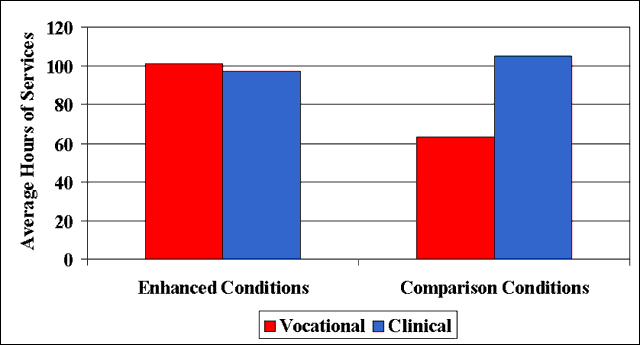Employment Intervention Demonstration Program (EIDP)
duration: 1 min. 59 sec.
slide 15

Transcript
Let’s look at the finding related to amount of vocational and clinical services related to positive employment outcomes. If you look at the bar graphs to the left, you will see that individuals in the enhanced conditions received, on average, around the same amount of clinical and vocational services. In addition, the amount of both types of services was fairly high.
But in the comparison programs, people received around a third less vocational services than clinical services. So, the difference appears to relate to providing equal levels of well-integrated and coordinated vocational and clinical services. What do we mean by this?
Services integration means that vocational and mental health services (such as medication management and individual therapy) are provided by the same agency, at the same location, with all the information about the client combined in a single case record. In addition, there are regularly and frequently scheduled staff meetings (usually daily or at least 3 times per week) to coordinate treatments and services and enhance staff communication. In addition, vocational and case management services (such as housing, education, and benefits and entitlements counseling) are provided by the same agency, at the same location, with a single case record, and with frequent, regularly scheduled staff meetings.
And finally, we looked at the individual effects of specific services on employment outcomes. The study found that a number of specific services were related to better vocational outcomes. Among the vocational services, outcomes were better for clients who received more job development, on-site job support, collaboration with employers, vocational assessment, vocational treatment planning, vocational counseling, and transportation. Among the clinical services, only individual counseling and partial hospital program services were related to better employment outcomes.